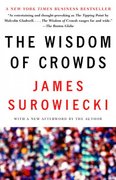Question
Suppose in the Solow growth model that F(K,N)=K^aN^1a, where 0
Suppose in the Solow growth model that F(K,N)=K^aN^1a, where 0 , determine what happens to the shares of aggregate income held bynon-savers and by savers. Given theCobb-Douglas productionfunction, the capital share of aggregate income is alwaysa, and the labour share of aggregate income is always 1a. If Y is aggregateincome, then thesaver's income is (1a)Y/2, (Y/N)(1a), aY, (Y/N)(1+a), and thenon-saver's income is aY. (1a)Y/2. (Y/N)(1a) (Y/N)(1+a). Savings cause thecapital/worker ratio to rise fall stay the same which causes real wages to rise. fall. stay the same. So the savers receive a larger share a smaller share the same share of aggregate income as thenon-savers, and over time this share increases. decreases. does not change.
Step by Step Solution
There are 3 Steps involved in it
Step: 1

Get Instant Access to Expert-Tailored Solutions
See step-by-step solutions with expert insights and AI powered tools for academic success
Step: 2

Step: 3

Ace Your Homework with AI
Get the answers you need in no time with our AI-driven, step-by-step assistance
Get Started


